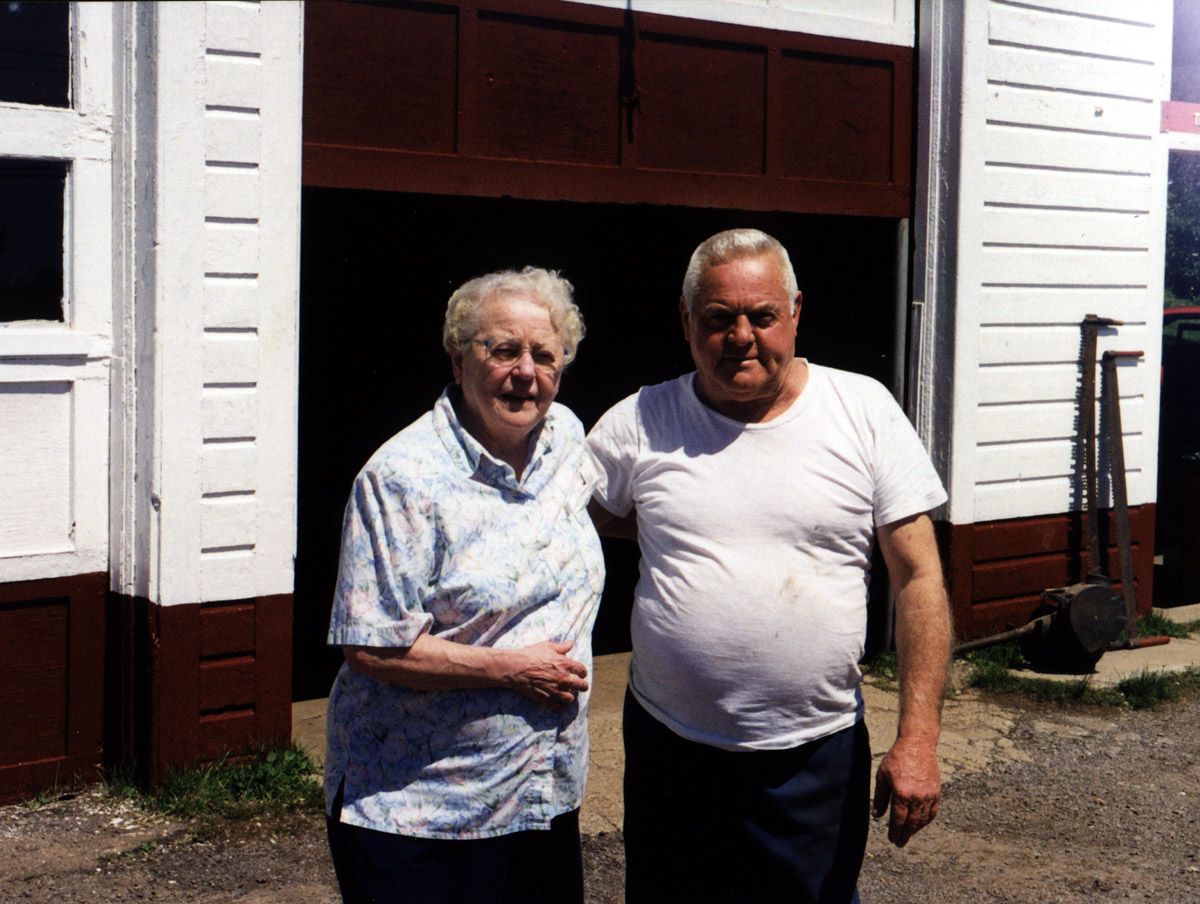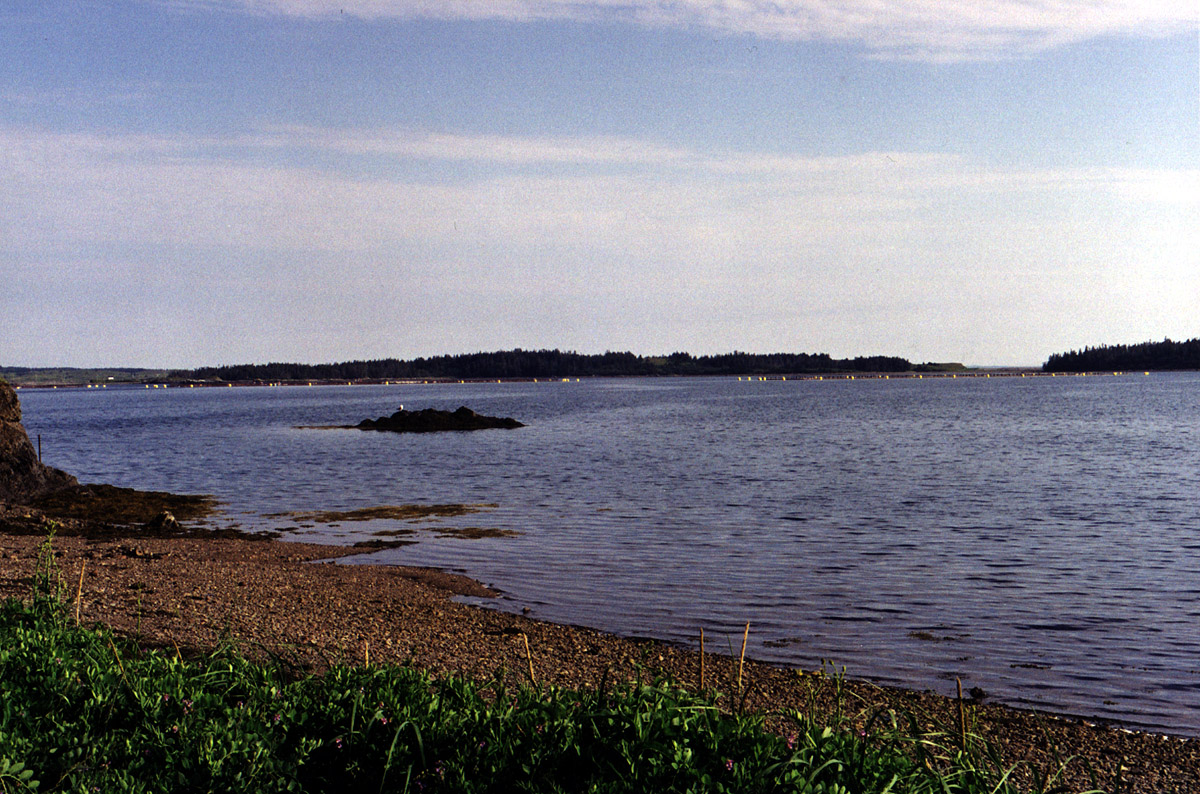 |
Louisdale is important to the Alfred Longhurst/Theresa Burke family as being the birthplace of Theresa (May 27, 1925). It also became the principal home of Theresa's parents (Fred and Ellen Jane Burke) from c1917 to sometime shortly after 1942, from whence the family moved from Pointe à Bouleau in River Bourgeois to after the death of Ellen Jane. For Theresa's older siblings, Lillian (b. 1909), Angela (b. 1910), Frances (b. 1911) and Arthur (b. 1912) there are online records of them being born in River Bourgeois here. For the others, their birthplaces are noted at geni.com as... for Garvey (b. 1914), Cecilia (b. 1915), Donald (b. 1917), Jean (b. 1918), Herman (b. 1919), Helen Jeanne (b. 1920, d. 1920): all River Bourgeois. Then for Bernard (b. 1921), Theresa (b. 1925), Lou (b.1927): Louisdale. If accurate, then the Burkes possibly moved to Louisdale in 1920 or '21. (I wonder if the infant death of Helen Jeanne in 1920 had anything to do with the decision to move to Louisdale?)
Alternative position... The buyers of the Burke house in River Bourgeois, Charlie and Alvina Richard, recalled doing renovations to it for a year before moving in shortly after their wedding in February of 1918 (which would be an unforgettable date). This would mean that the house sale and move took place in 1917. And, this would mean that the online place of birth records for Garvey, Cecilia, Donald, Jean, Herman and Helen Jeanne are in error.
There is a third possibility - that Ellen Jane went back to River Bourgeois when ready to give birth, to get the assistance of the grandparents. This would mean that the family was living in Louisdale but the places of birth were River Bourgeois.
(Awaiting clarification, perhaps in the form of purchase date or build date of the house in Louisdale, or with church records to support the places of birth.)
LOUISDALE (R.)—The earliest name of this place was Seal Cove; it was afterwards named "Barrasois St. Louis." In 1905 at the suggestion of Mr. J. Nelson Scott, the Postmaster, it was changed by an Act of Parliament to its present name, which retains part of the old name with a local descriptive addition. (source)
History of Louisdale
by Benjamin Marchand, as told to Richard Marchand, great, great grandson of the founder.
The story begins...
Previous to 1850, there lived in Little Anse French Acadians to whom their only occupation was fishing. After the fishing season was over, there was nothing else to do but shoot wild birds in winter. The surroundings of Little Anse are very rocky and barren with no wood. The winters being very severe, they suffered a lot for want of fuel. They decided among themselves that somebody should go in search of a new home for winter.
On the twelfth of September, 1850, John Marie Marchand and Bastian Sampson and their two sons sailed out of Little Anse in a whale boat with a little boat in tow, to explore the north shore of Lennox Passage. After rounding Cape LeRound which is about six miles from Little Anse, they sailed west along the north shore of Lennox Passage. It was inhabited all along until they came to Louisdale, formerly Seal Cove. They anchored the whale boat and decided to take the little boat to find out if there was a channel to enter the cove. After finding out there was plenty of water, they took the whale boat inside the cove and anchored her.
They made their first landing at the present site of Thomas Marchand's land. The shore being heavily wooded to high water mark, they tied their boat to a tree and began to explore the present site of Louisdale. After exploring the rest of that day, they decided it would be a great place to come and live in winter. Having with them all necessary tools to build a log house, they decided to start the next morning to build the log house 30 feet long by 24 feet wide. It was completed in six working days, ready to move in. The next day, they sailed back to Little Anse to finish their fishing season which would end the first week of November.
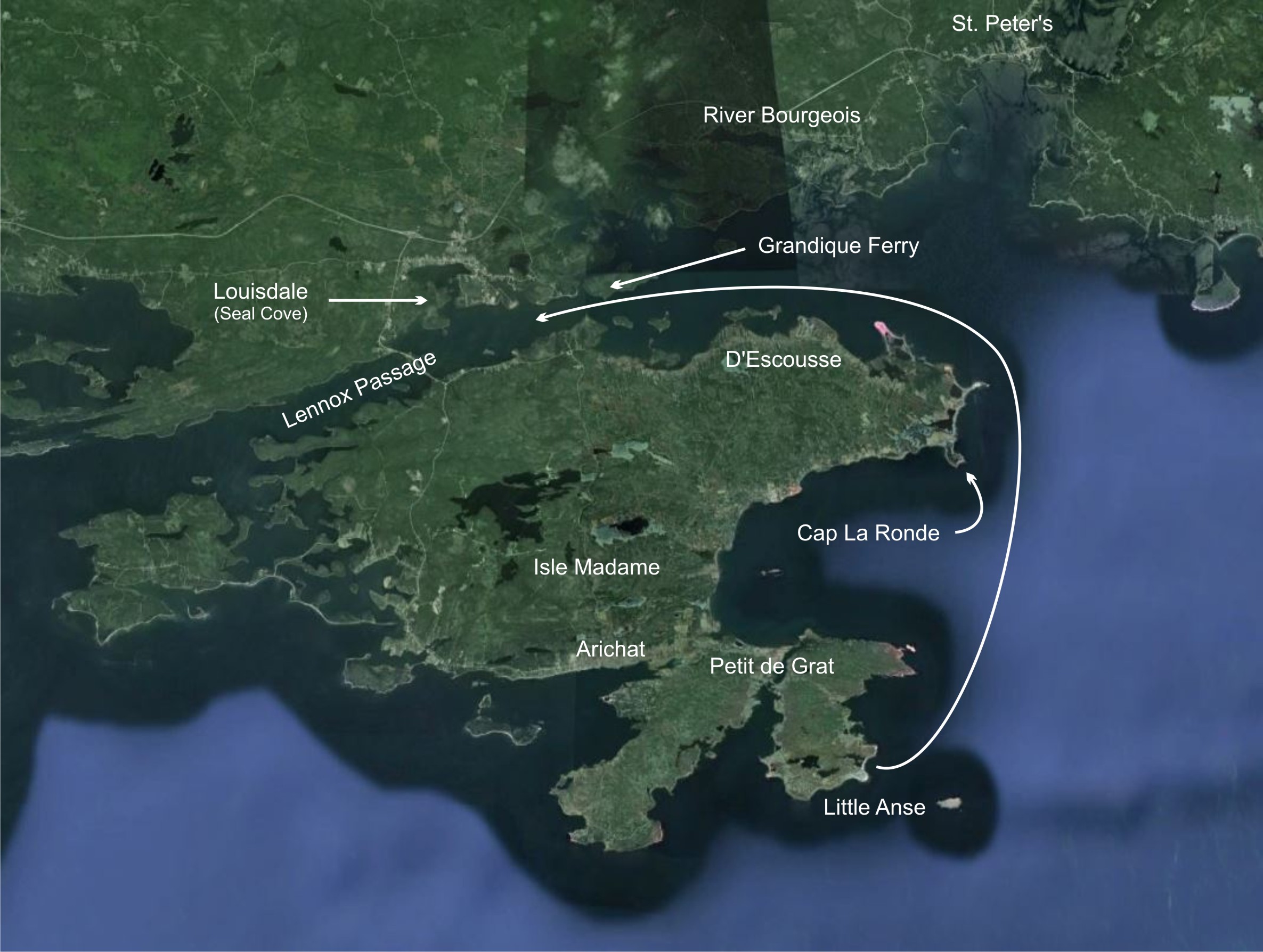 |
John Marie Marchand had eight children: four sons - Desiré, John, Ben and Edward; and four daughters - Mary, Judith, Nancy, and Angella. Bastian Sampson had seven children: Six sons - Desiré, Abraham, Cyprian, Elias, Bastian Jr. and John; and one daughter - Adelle.
On the tenth of November, John Marchand embarked in a schooner from Petit-de-Grat for Prince Edward Island with pickled herring to exchange for potatoes and turnips for the winter supply of both families.
On the eleventh of November, they chartered a little vessel from Petit-de-Grat in order to take both families and their baggage to Louisdale. On the twelfth they sailed out of Little Anse for Louisdale, formerly Seal Cove, and arrived the same day. But to their disappointment, they found that the log house they had built two months previous had been reduced to ashes. Not discouraged by their misfortune, they set to work and cut the wood along the shore and hauled the whale boat, turned her bottom up, and with the sails and bed clothes managed to live there for three days until they built another log house - 20 by 24. With their provisions nearly exhausted, John Marie and his wife Mélie, decided to go to Arichat or Petit-de-Grat for some. So on the sixteenth of November, they left from Louisdale with only a little path through the woods to Grandique Ferry to cross onto Isle Madame.
And while they were away there came a heavy north east snow storm that lasted for three days. Not being able to get back before the storm was over, they were very uneasy because they had left their family of seven children with one cake the size of a common loaf of bread.
They crossed back on the twentieth and on their arrival they found out that all the children of both families were down with the measles. They suffered a lot during the storm as the log house wasn't corked yet and the snow was drifting inside. On the twenty-eighth of November, John Marchand, who had gone to Prince Edward Island for potatoes had arrived at the entrance of the harbour and they landed eighty bushels of potatoes and twenty-five bushels of turnips. Not having a cellar ready to put them in, they dug a hole in a hurry at the present site of Thomas Sampson. But before they could secure them, there came a cold snap and froze all the potatoes and turnips. They kept them frozen all winter and thawed them before using them.
In 1851 the wooden ship-building industry was very brisk on Isle Madame. Having three ship yards and two wooden ships under construction, the demand for Juniper trunnels was very good. Being all settled down for winter and not much to do, they decided to go and see those builders if they could get a contract for those Juniper trunnels. They were given a contract for fourteen thousands and they were getting a barrel of flour in exchange for them.
In March of that year, they cut and piled fourteen cords of wood for one barrel of corn meal. They worked in the spring cutting wood down to start cultivating their land. They burnt a piece of land to plant potatoes with a hoe between the stumps. So the fifteenth of May they had to go back to Little Anse to their old trade of fishing, leaving their wives and small children to plant and mind the log house, taking with them the boys that was old enough to fish.
On arriving in Little Anse, the fishermen were anxious to know how they fared in Louisdale that winter. After relating to them what had transpired during the winter, three more fishermen decided to move to Louisdale with their families the following fall. They were: Benjamin Linden with five children - two sons: Joseph and Ben; and three daughters: Eliza, Maria and Mary Ann; Isaac Marchand with seven children - four sons: Adolbert, John, Simon and Elias; and three daughters: Virginia, Harriet and Julia; Regis Marchand with seven children - two sons: Felix and Xavier; and five daughters: Domitile, Judith, Veronica, Elizabeth and Louise.
Things went on smooth during that summer. The two pioneers would come and see their wives and family every two or three weeks to see how they were getting along.
After the fishing season was over, they came back to Louisdale. There was already a population of 44. For a couple of years there wasn't much to do, only their regular routine; go fishing in the spring and come back in the fall. They didn't have much land cultivated.
On the north of Louisdale, it was inhabited by the Scotch, all farmers, and were settled very far apart in the country. The nearest to Louisdale was Farquhar MacPherson, Grande Anse. The Scotch and the French Acadians were very friendly and they did good business in trading certain articles. Arichat, being the commercial town of Richmond County, it was a long distance for those farmers to obtain those articles which were: fish, tea, tobacco and calico. After their fishing season was over in Little Anse, they would come back to Louisdale taking with them more of those articles than they could consume, then go to the country amongst the farmers and exchange them for wool and hay, which would enable each family to keep a cow until they would have land enough cultivated to cut hay. In eighteen fifty-six another family decided to come to Louisdale; Joshua Sampson with seven children: three sons - Joseph, Edward and Abraham; and four daughters - Elizabeth, Suzanne, Marietta and Virginia. This being the sixth family and the first settlers of Louisdale.
In 1858, the codfishing industry was very brisk on the coast of Cape Breton as far east as Flint and Scatarie Islands. Bastian Sampson and his sons being very handy, decided to build a fishing schooner of seventeen tons to go codfishing along the coast. They began to gatherwood and in 1859 they began to build the schooner on the north side of Nicholas Lake. Not being able to work steady in summer, it took them two years to build her. After she was completed, they had to come down River Moulin as an outlet to Lennox Passage. River Moulin was very shallow in spots and had a temporary bridge so they had to wait for a heavy freshet to launch her. So on the later of 1861 (April) there came a heavy freshet and they tore down the bridge and the schooner went down the river to Lennox Passage.
That same year they built a permanent bridge across River Moulin and cut a road to Grandique Ferry. Not having any trucks or wagons it was cut just wide enough for a horse and sleigh.
Grandique Ferry was the nearest settlement to Louisdale. It was inhabited by the Irish. They had a schoolhouse built in a private house. The population of Louisdale was increasing rapidly and there was need of a schoolhouse to educate their children. So after discussing the matter between the Grandique and Louisdale people, they came to the conclusion that they would build the schoolhouse between the two settlements and it was built in 1865, two thirds of the way to Grandique Ferry and one mile and a half from Louisdale.
The Irish settlers had all the land granted from Grandique Ferry to the east end of Louisdale village. The French being on crown land, they decided to grant the land they were settled upon. John Marie Marchand and his two sons applied for a joint grant for 150 acres at the east end of Louisdale village and Bastian Sampson and three other settlers - Benjamin Linden, Isaac Marchand and Regis Marchand – also applied for a joint grant for 100 acres, being to the west end of Louisdale. Their grants were issued in 1867. In 1871 Benjamin and Edward Marchand, youngest sons of John Marie Marchand, built a house 32 X 24 for both families. There being huge pine trees, they cut one eighty-four feet long, without a limb, and after it was sawed, it sealed the lower part of the house all around. There is still some of them boards in use now in Louisdale.
In 1871 Bastian Sampson, one of the discoverers of Louisdale, passed away at the age of 78 years.
The schools's pupils was increasing very fast in Louisdale. Having a long distance to go in winter, they decided to build a schoolhouse in the village of Louisdale which was built in 1885 near the present site of the parish glebe house. Mrs. Baptiste (Kate McEachern) Ceretto of Arichat was the first teacher.
There was yet no post office in Louisdale, the people had to go to Grandique Ferry for their mail. The first post office was at River Moulin bridge in 1893, Dan W. McRae, Postmaster. The name of Seal Cove was then changed to Barrachois St. Louis.
The following year the post office was turned over to Simon Joyce who was driving the mail from MacPherson Grand Anse to Louisdale.
John Marie Marchand, one of the discoverers of Louisdale, was a man of strong constitution. On his dying bed he was asked if he wanted the doctor. He said he was old enough and willing to die. He passed away in 1895 at the age of 102. His wife Mélie passed away in 1896 at the age of 98 years.
The schoolhouse of Louisdale was very small and the school's pupils was increasing fast. So there was a need of another schoolhouse to accommodate the pupils. It was decided by the ratepayers to build it in the middle of the section. The first department was built in 1902, 36 by 24.
The people of Louisdale had a lot of trouble with their mail, having four places by the name of Barrachois in Richmond County. The mail would be delayed sometimes three or four days before it could reach its right destination. The people of Louisdale applied to have the name changed. So in 1903 the name of Barrachois St. Louis was changed to Louisdale.
Having no church yet in Louisdale and Arichat their parish and a distance away, a church was very much needed. The majority of the people had no horses and had to walk that distance in order to make their Easter duties. In August 1902, the people of Louisdale called a meeting with Rev. Fr. Gallant P.P. of Arichat presiding, urging the people of Louisdale to make a special effort to raise funds to start the church. Mostly all the parishioners signed their names to pay funds to start the church, which was started in 1904 and the exterior completed. The population of Louisdale was increasing very fast and having Grandique Ferry school system amalgamated with Louisdale, there was need for a second school department. So there was 26 feet added to the schoolhouse and made two departments in 1908.
The exterior of the church has (sic) already been built twenty-one years and is getting very shaky. With Rev. A. E. Momberquette (sic) P.P. of Arichat at the head, there was eighteen feet added to it and the interior completed in 1925.
Having only a two department school house and cannot accommodate all the school children, the third department was ordered built by the school inspector; and in 1931, two more departments. Having only three in use, the fourth is used as a parish hall. Louisdale enjoys good facilities, having a church, a four department school house, water and railway facilities, the trunk highway within half a mile, the main road to Isle Madame, also one of the best country stores (Stewart's) in the province of Nova Scotia in the vicinity, and that is as much as any little village in the province of Nova Scotia can boast of...
...by the grandson of the founder, the present year is 1962 A.D.
 |
Simplistic map of Nova Scotia, showing relative positions of Louisdale and Halifax.
 |
Map of Cape Breton Island, showing the waterways and passages to the interior.
 |
Satellite view of Louisdale, unlabeled, c2015.
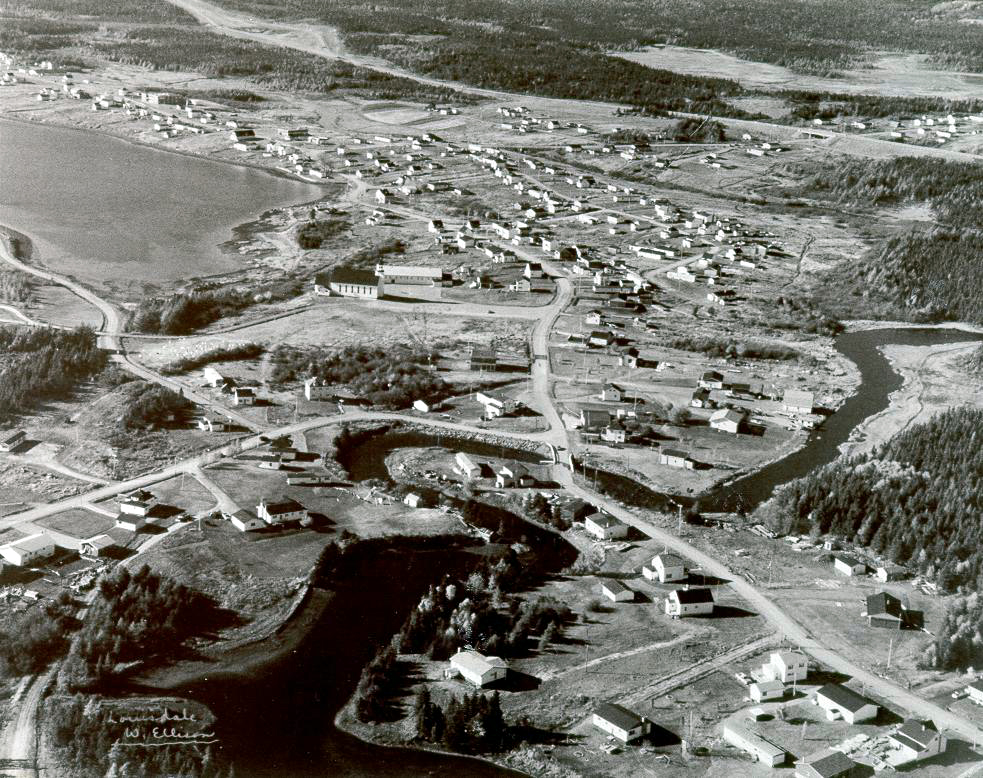 |
Aerial photo of Louisdale, taken by W. Ellison. Louisdale church can readily be seen.
Some photos from Theresa Longhurst's (nee Burke) collection (with additional photos from Cam Longhurst and others).
 |
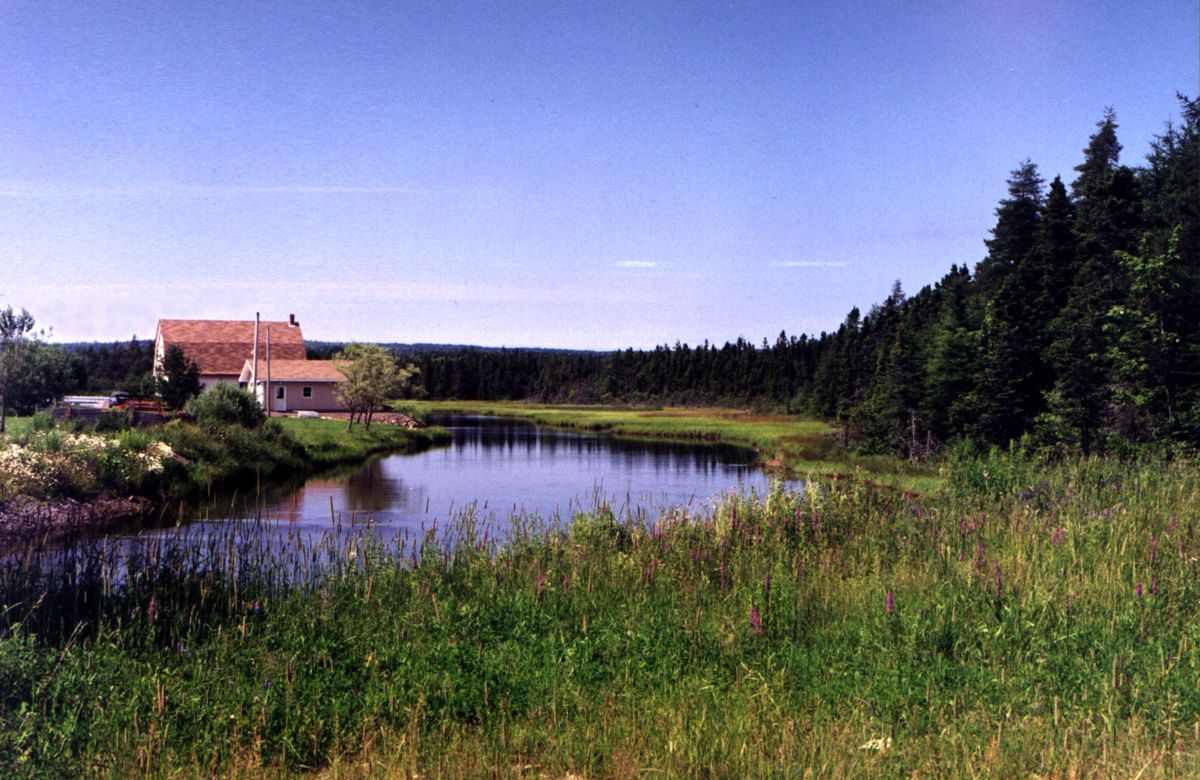 |
A photo taken years ago, and a photo taken in 1998, from the same perspective - near the bridge ___ .
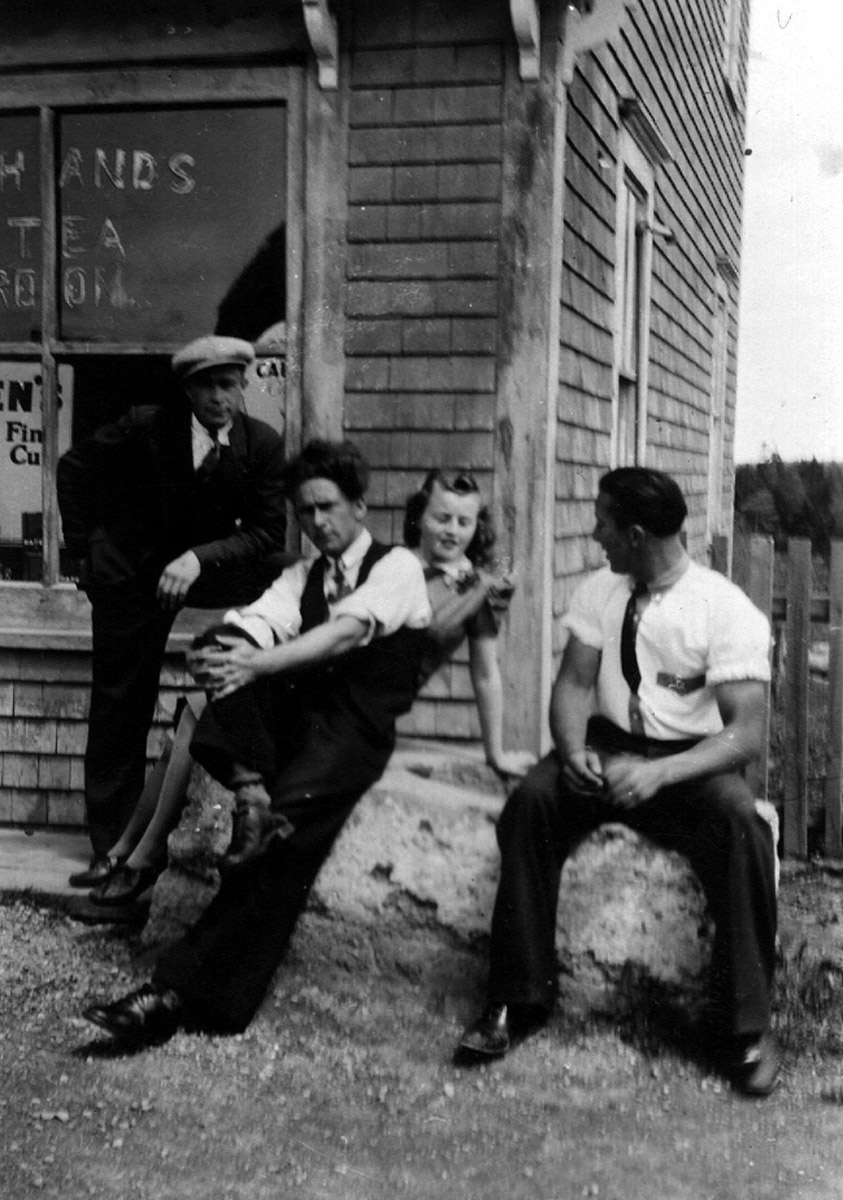 |
Theresa appears with others in this photo taken c1943 in front of the Tea Room in Louisdale.
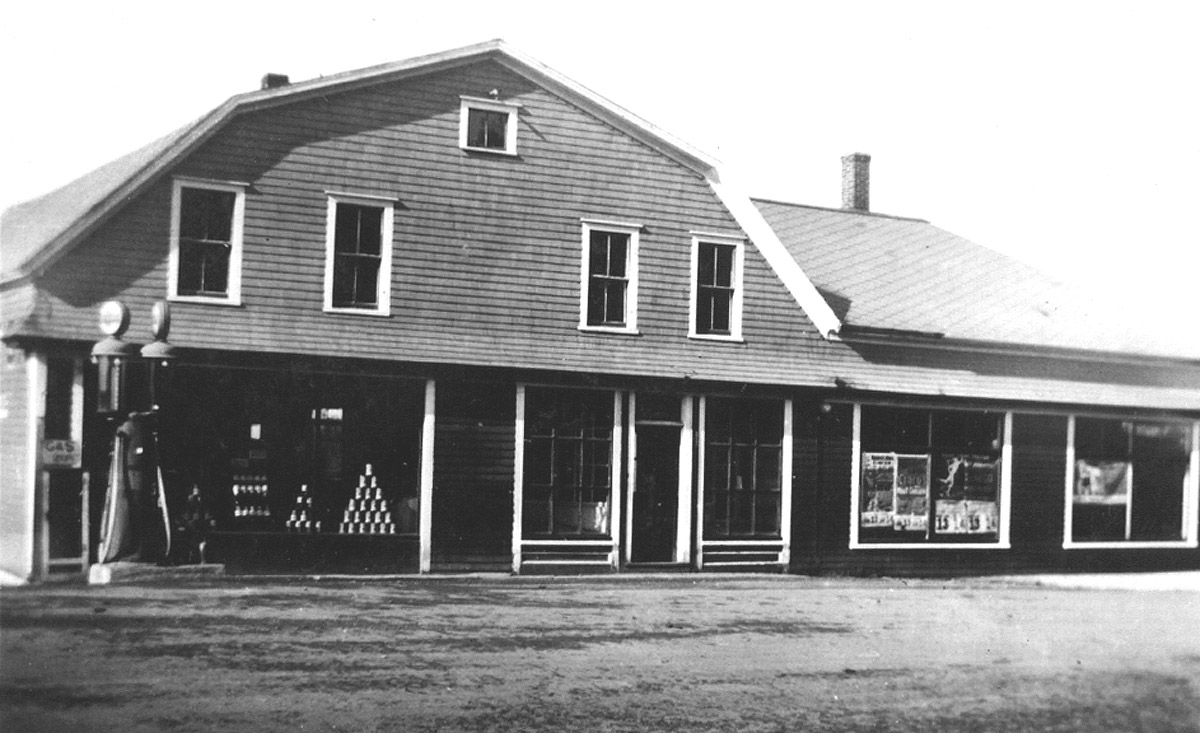 |
 |
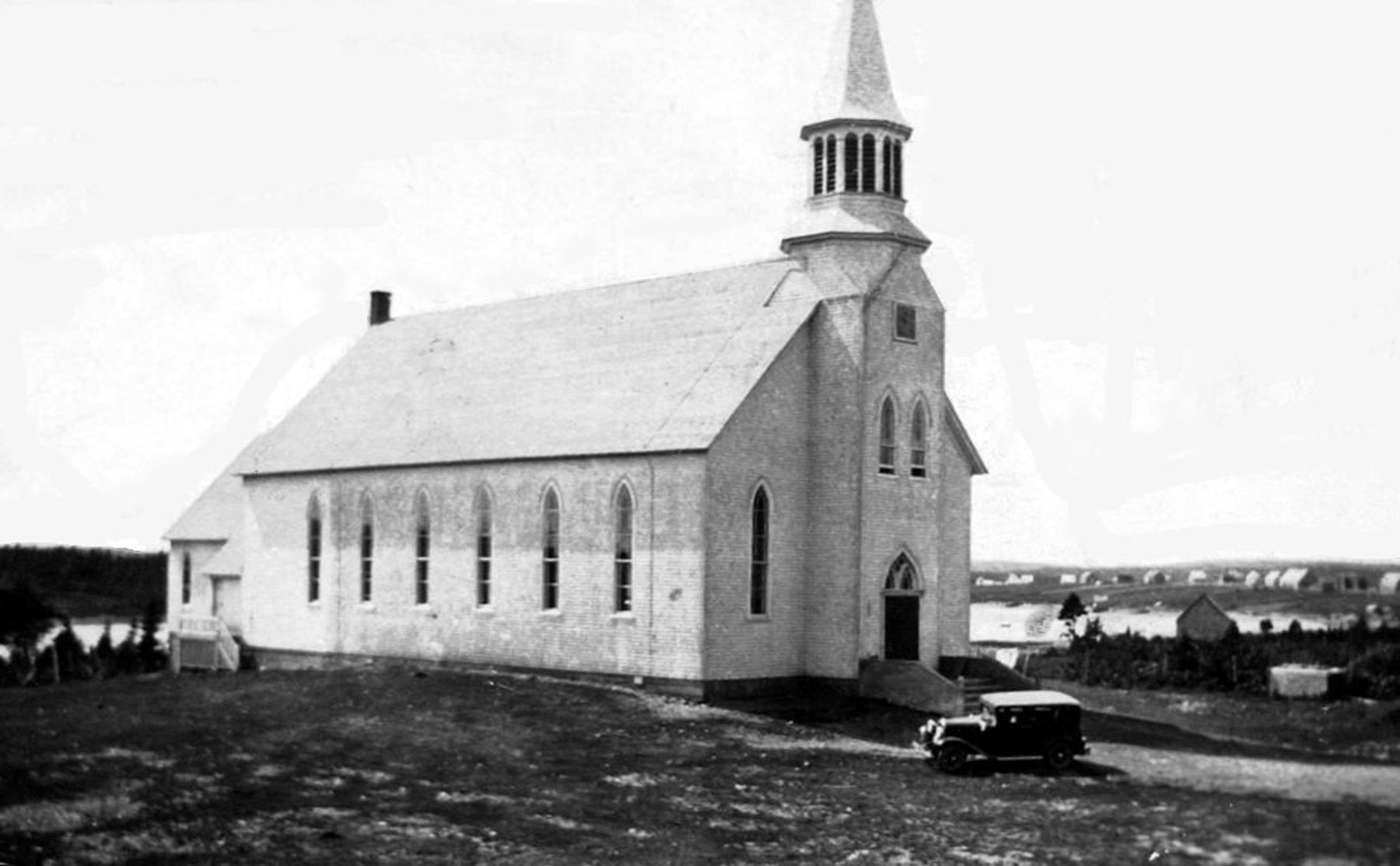 |
These photos - of Stewart's store, of the house across the street from the Burke house, and of the Louisdale church.
Albert Thibeau writes about (Johnny) Stewart's store...
Cam's note: this is the birthplace of my mother Theresa Mary Burke, daughter of Ellen Jane and Fred Burke, born here on May 27, 1925.
 |
 |
 |
 |
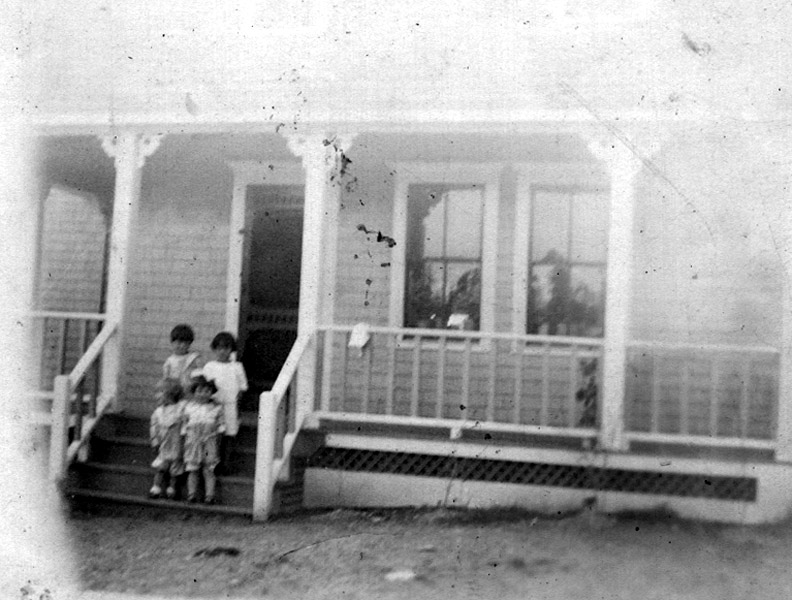 |
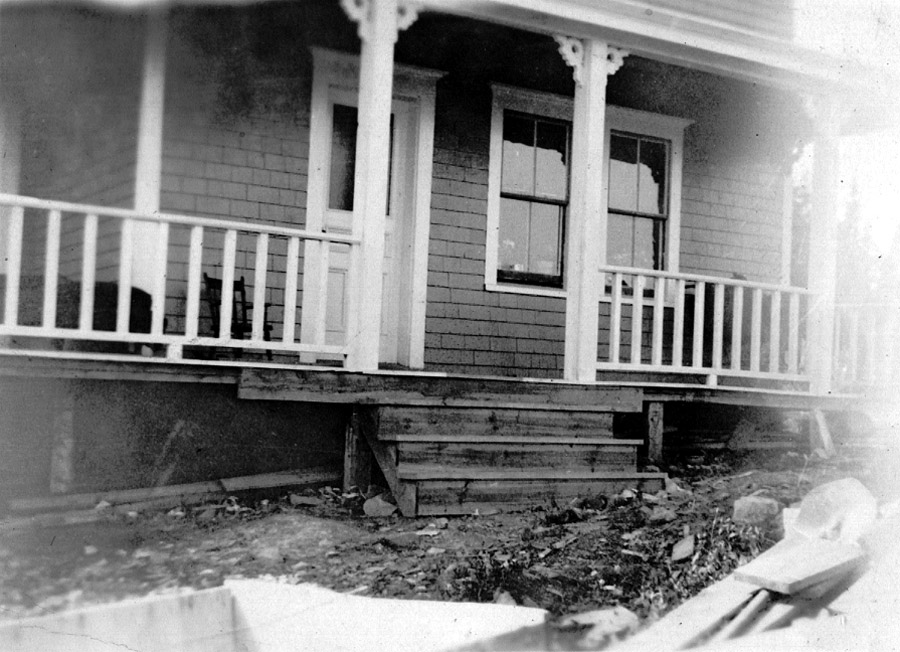 |
 |
 |
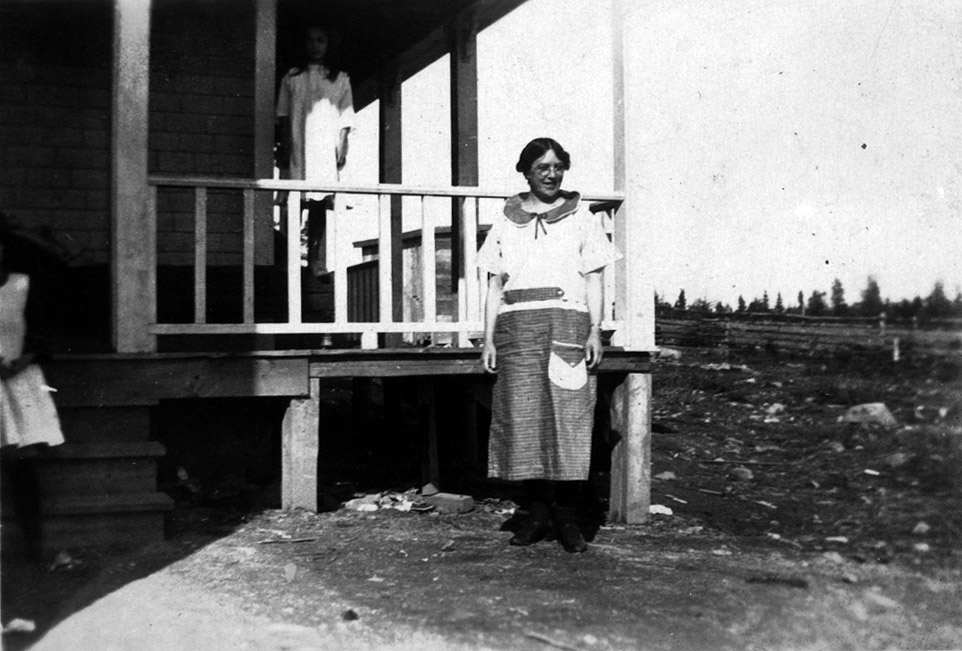 |
As stated on this page, "The house was left to different members of the Burke family to live in, notably Herman and his family. Herman passed the house on to Bernard, who sold it to the local government as part of a land acquisition deal for a proposed new highway. A story goes that everything valuable in the house was removed, including some windows. The house was burned down shortly after."
The Burke property, as seen today...
 |
 |
These two modern satellite views (2015) show where the house was in Louisdale - just off the highway oin the northwest quadrant of the main intersection, where Main Street runs under Highway 104.
 |
 |
These two photos were taken on a vacation trip in 1998, showing the kind of contruction equipment that was then occupying the lot.
Theresa Burke remembers... pitching pennies against the Burke house back in the 30's when it was here. In this 1998 visit, she wistfully thought about digging up the ground in search of pennies they lost here.
In a subsequent visit in 2011, I took another series of photos of the site, primarily to show the location of the house in relation to the neighbourhood and to the highway that caused the appropriation of the land. So as not to overburden this webpage with pictures of construction equipment and materials, I have put forth here small images of this series. (As with virtually all of the images on this site, hovering over an image will bring up title text which is intended to enhance the picture.)
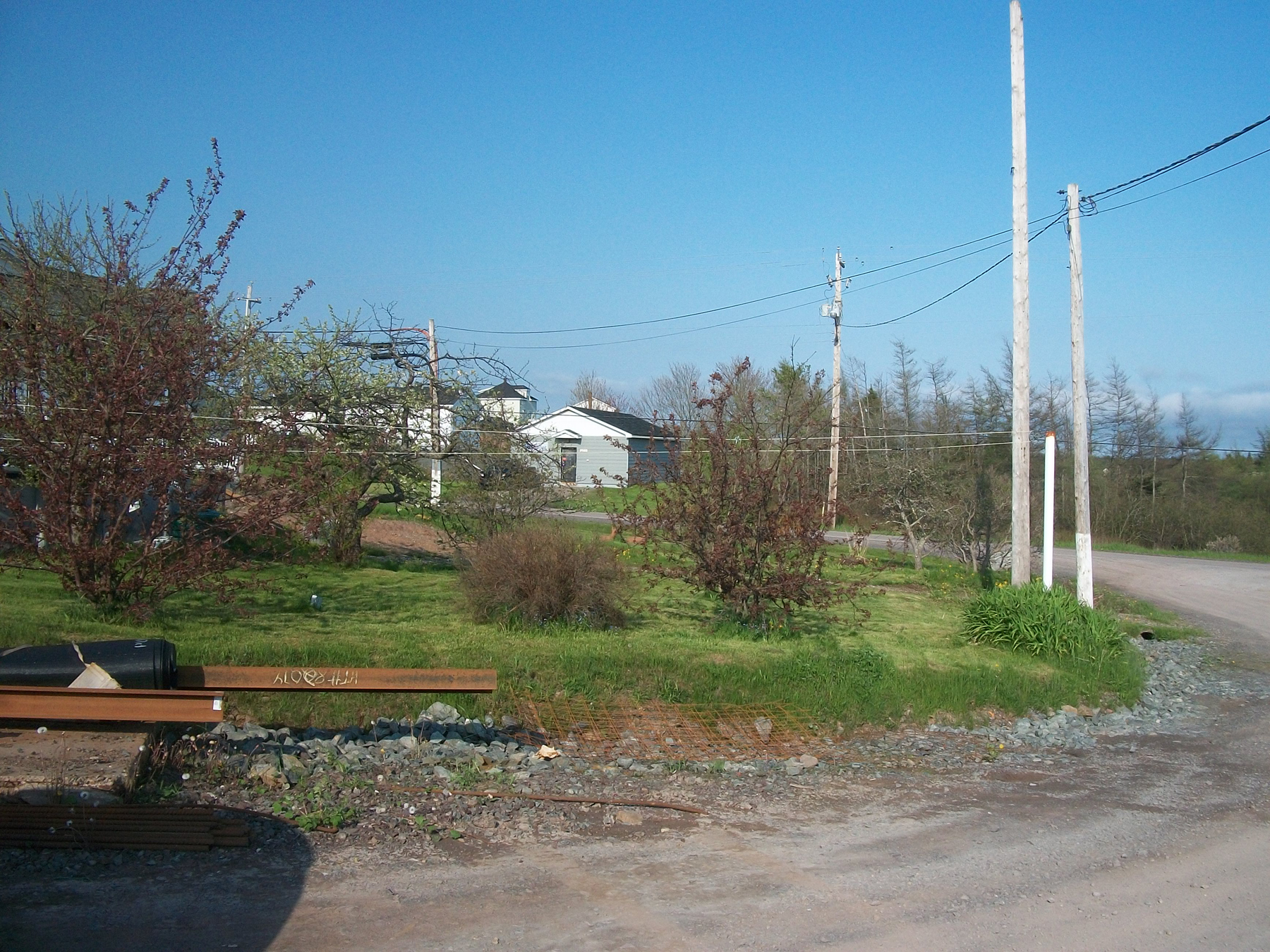 |
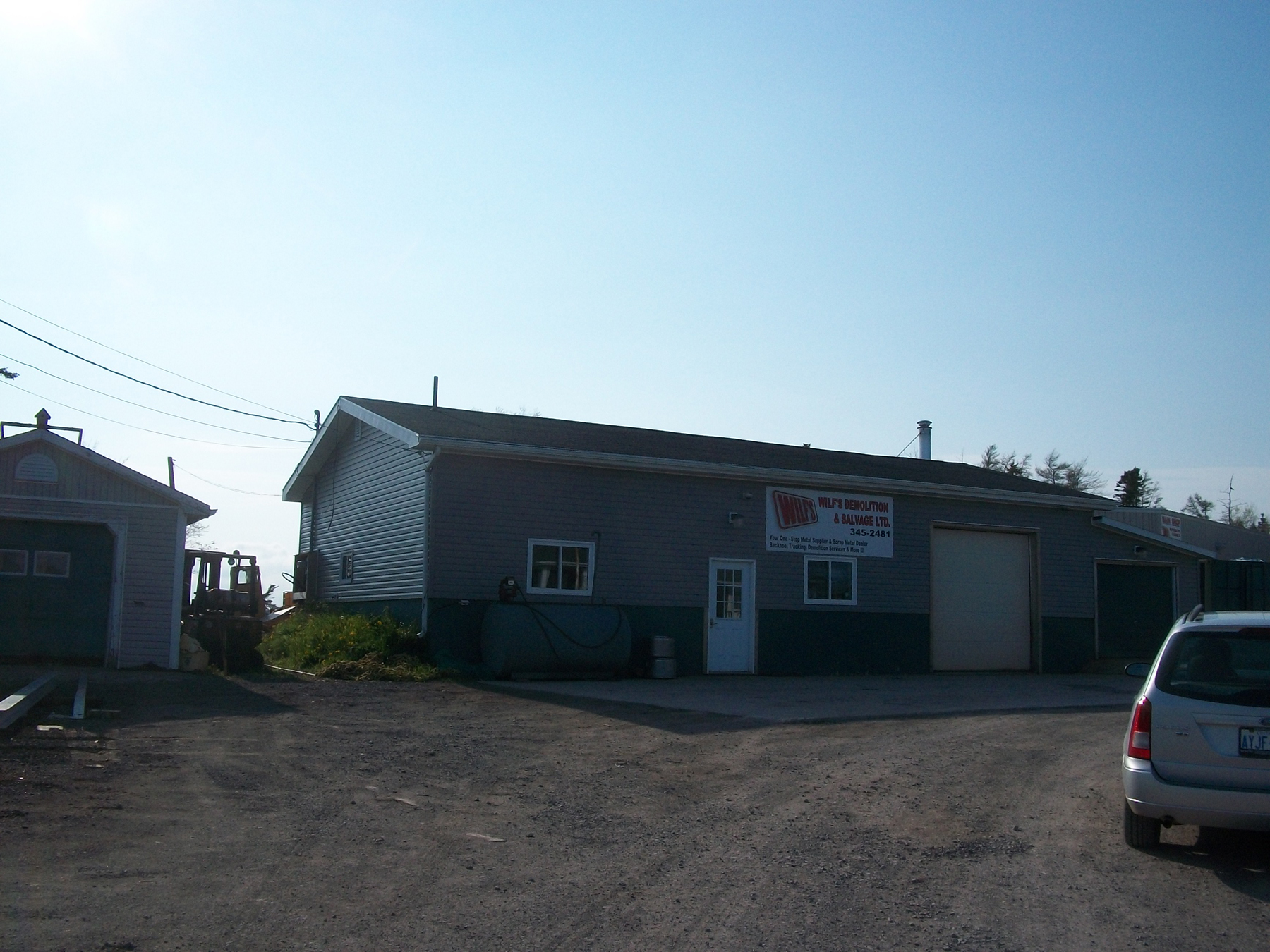 |
 |
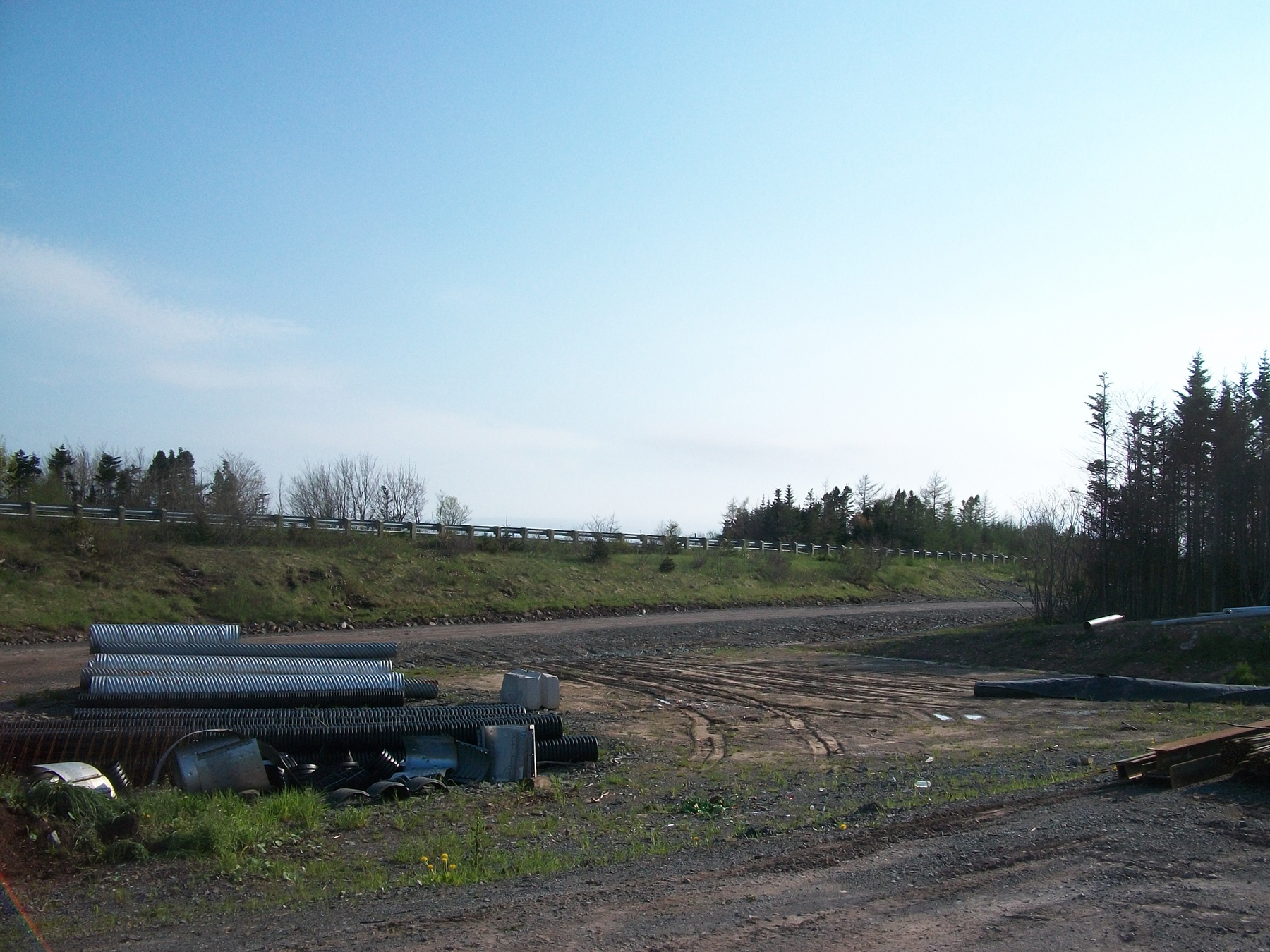 |
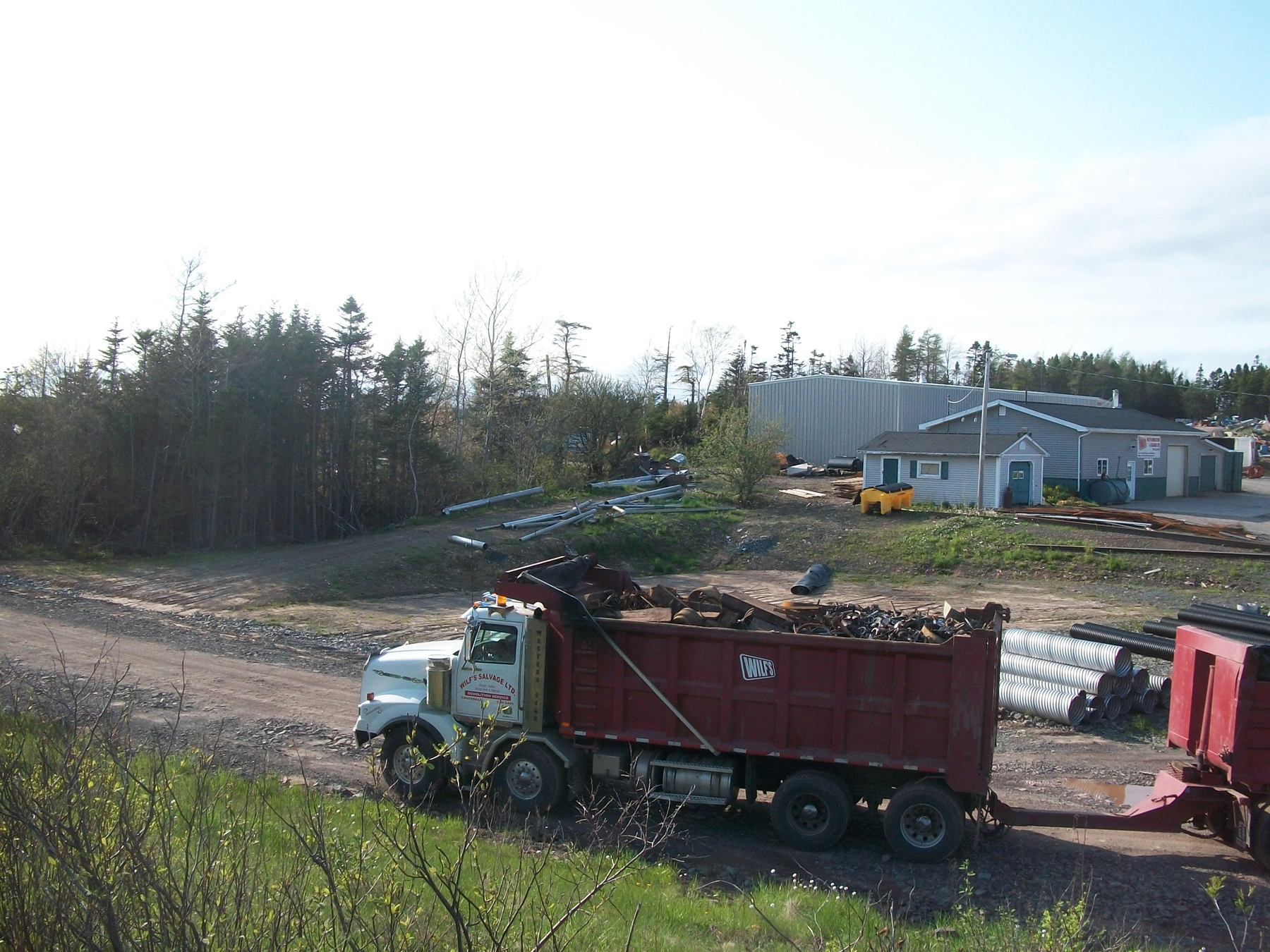 |
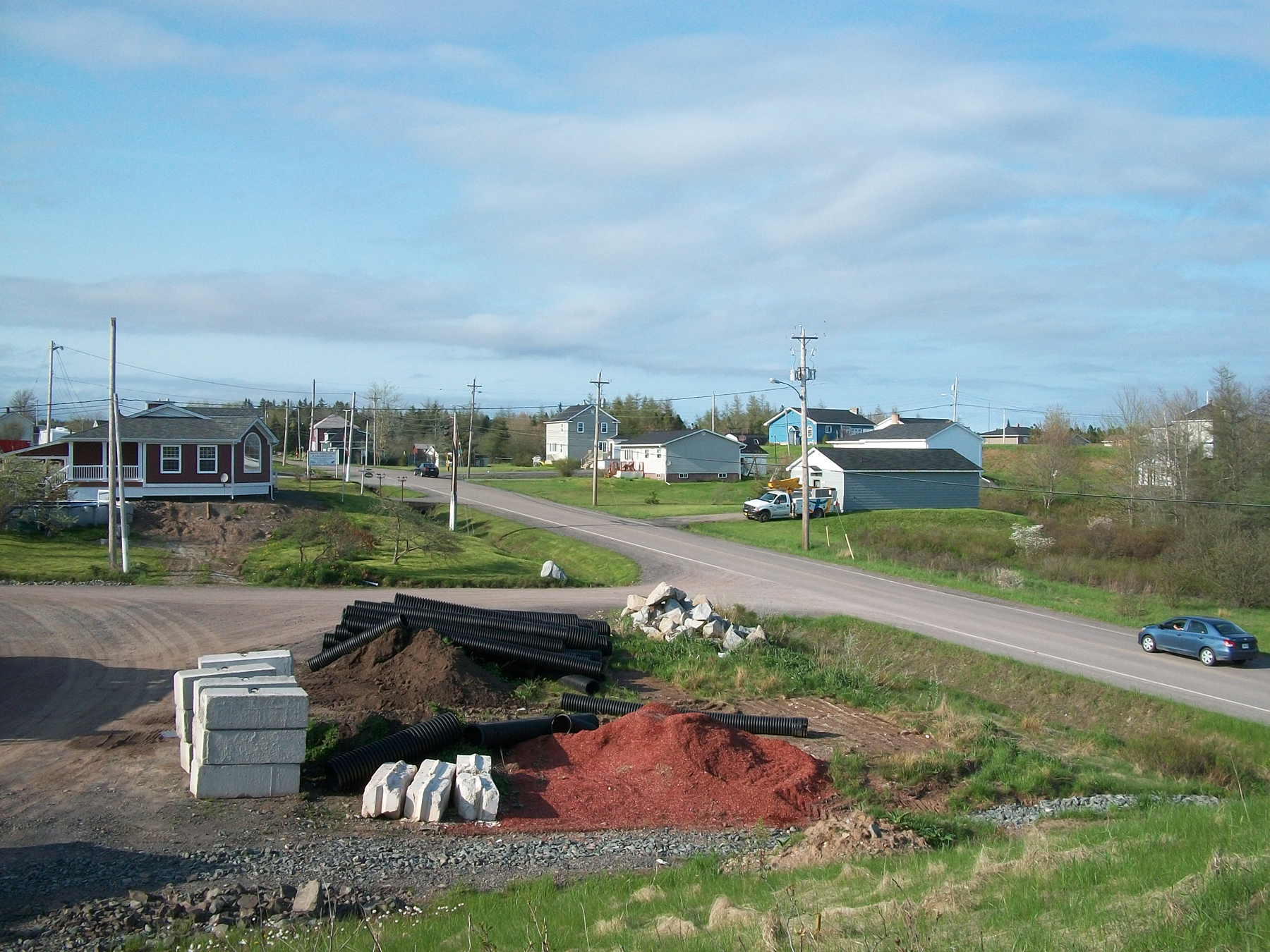 |
 |
 |
 |
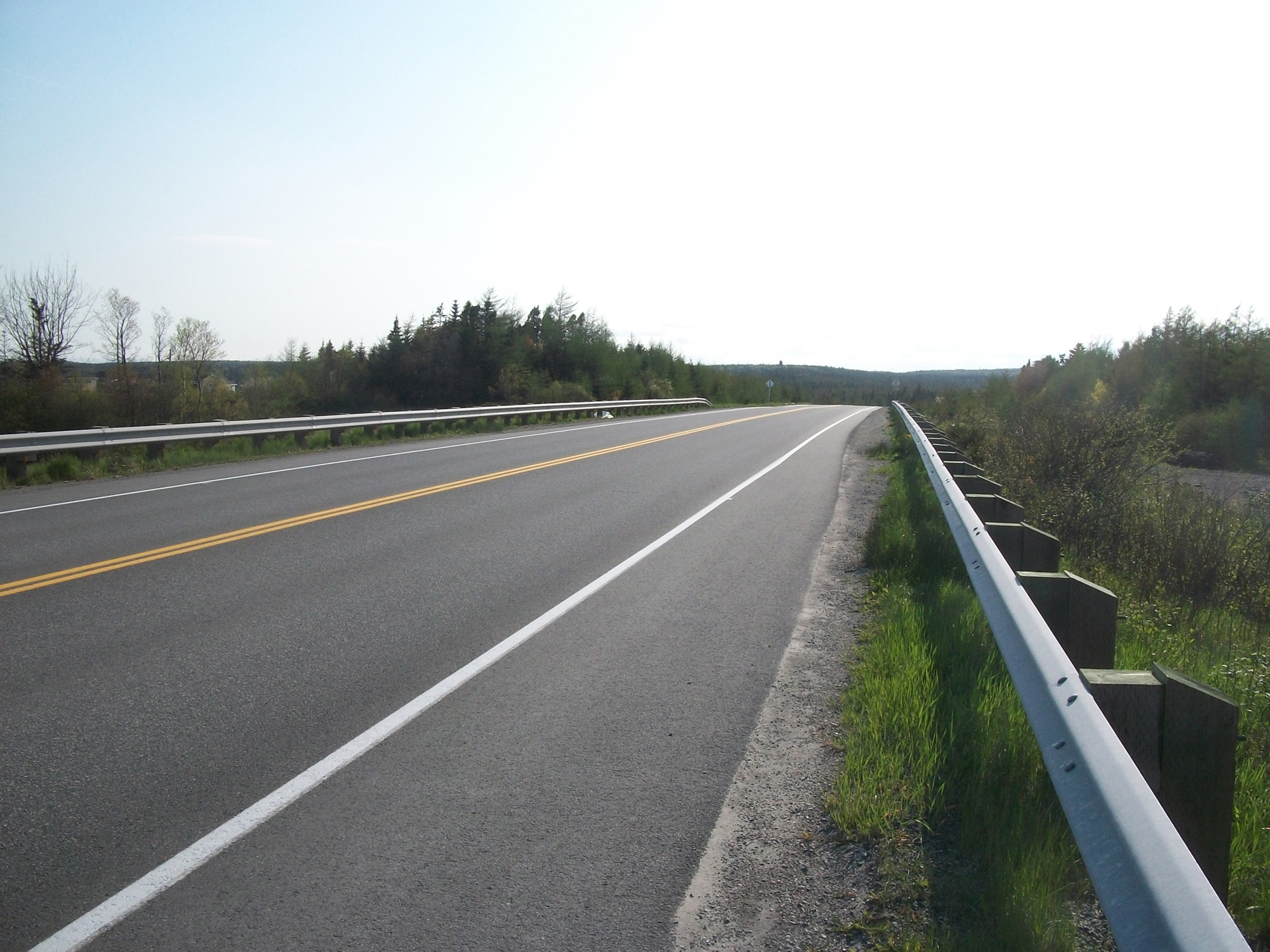 |
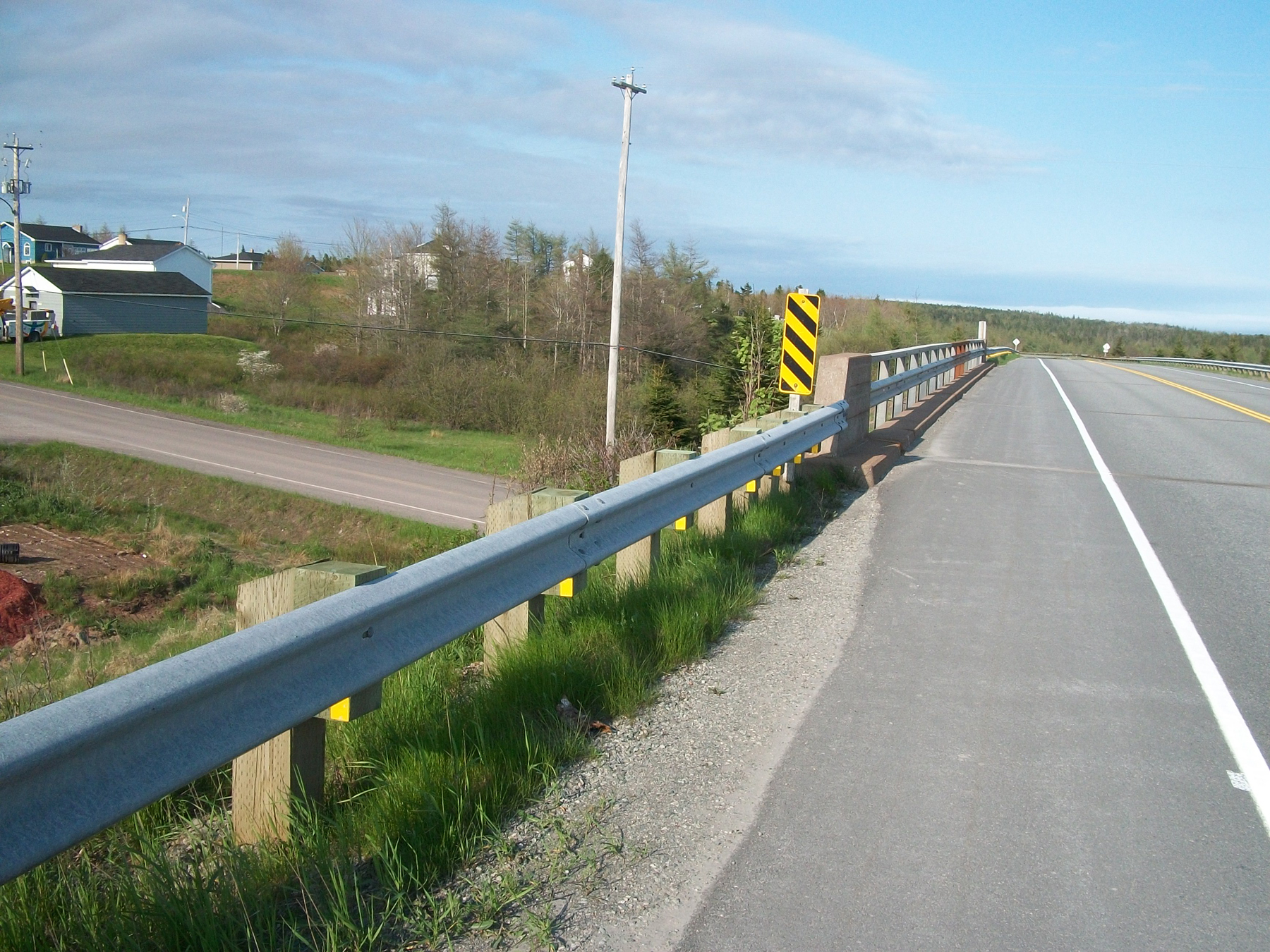 |
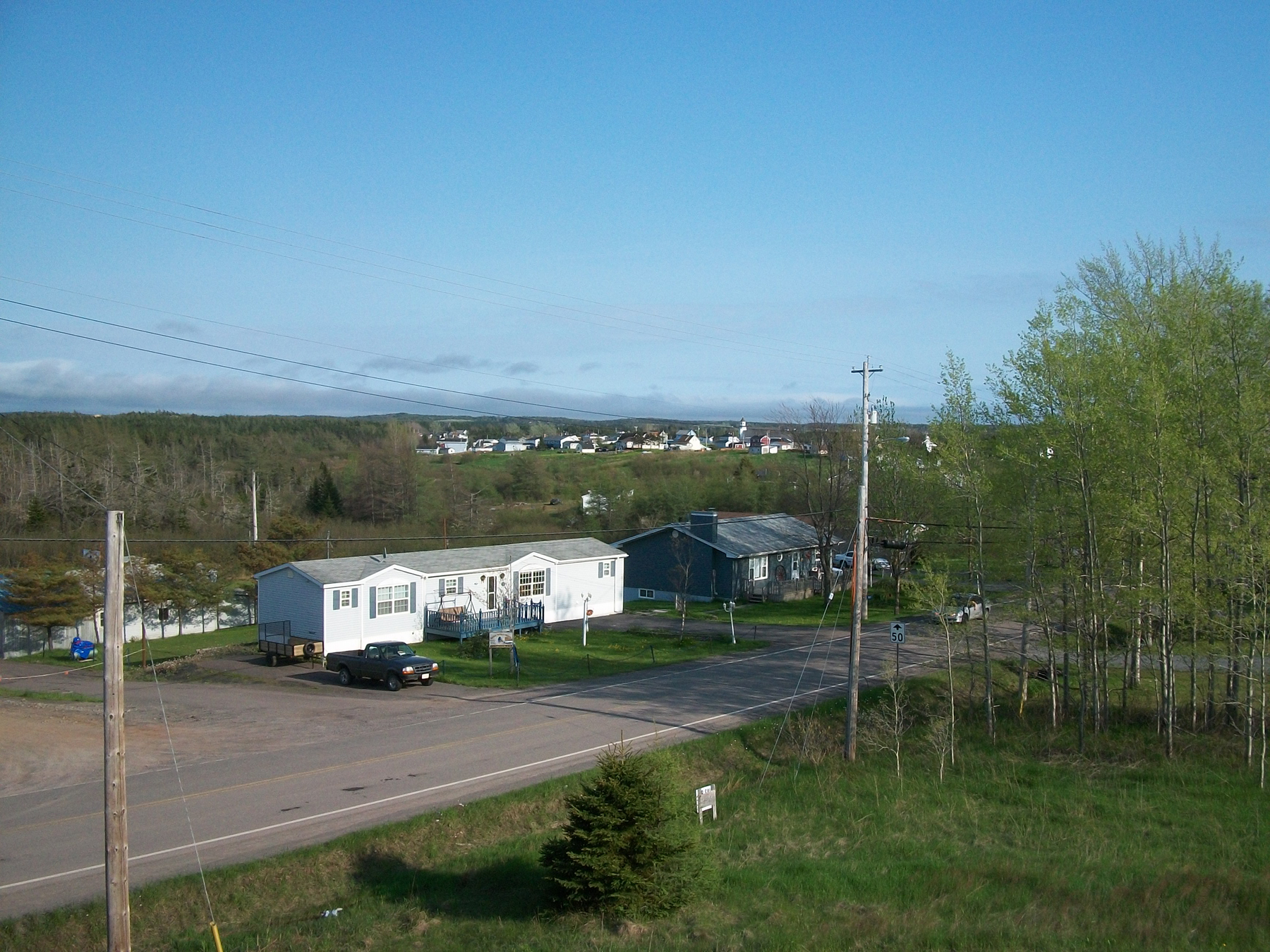 |
 |
This streetview from 2015 shows the current occupants of the property - a demolition and salvage company. (Looking westward, highway to the left.)
Theresa remembers... that there was a line on silver maples that ran down the property line (parallel to the highway as it is now).
Some pictures from the vacation trip in 1998...
 |
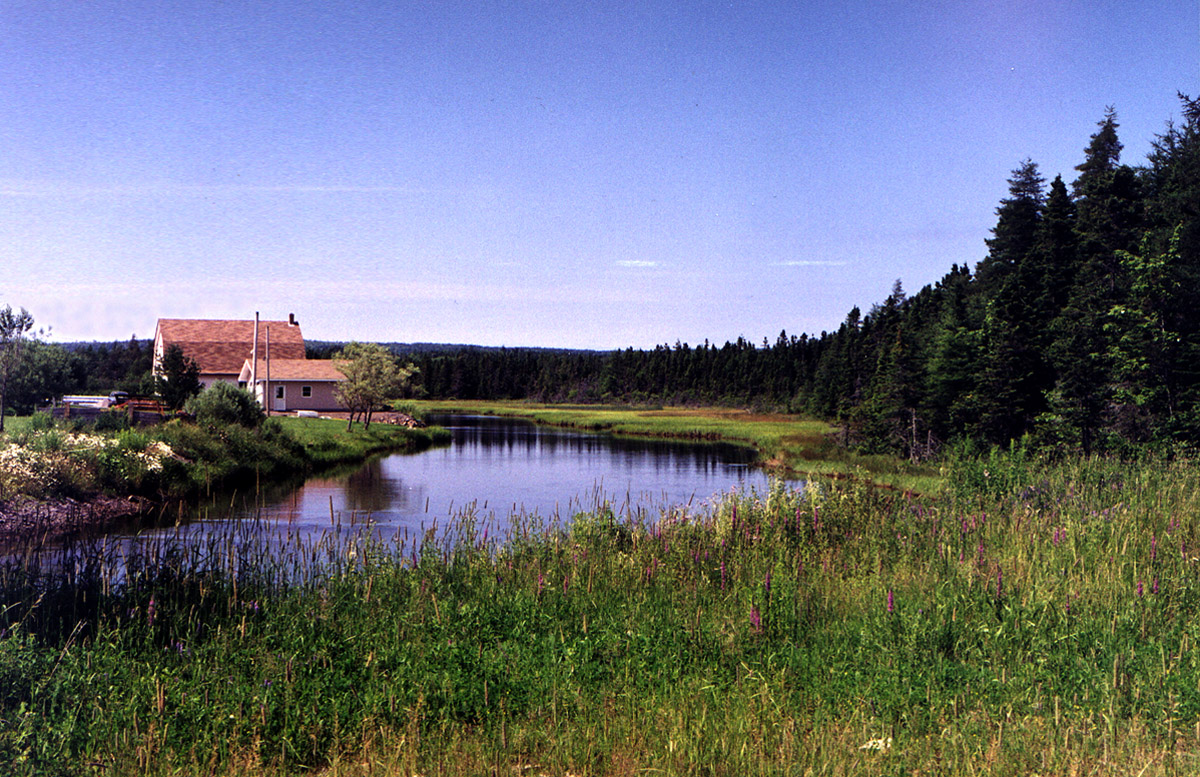 |
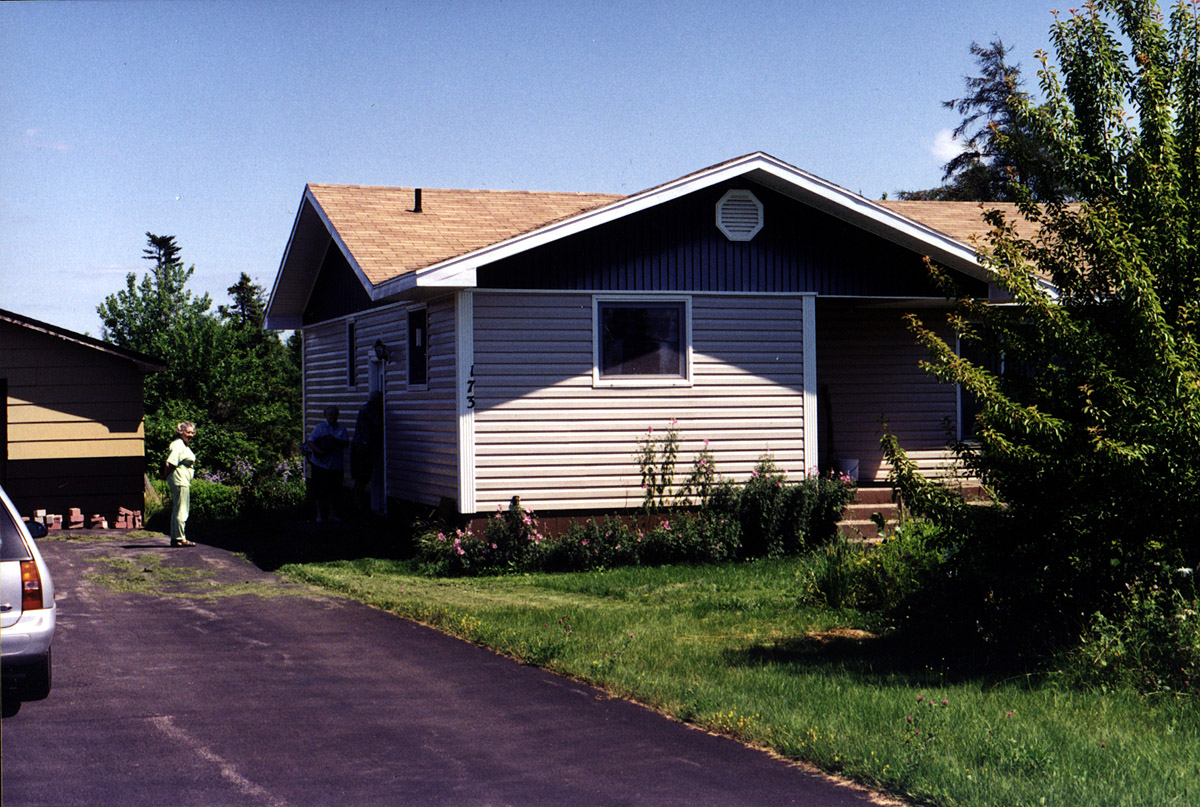 |
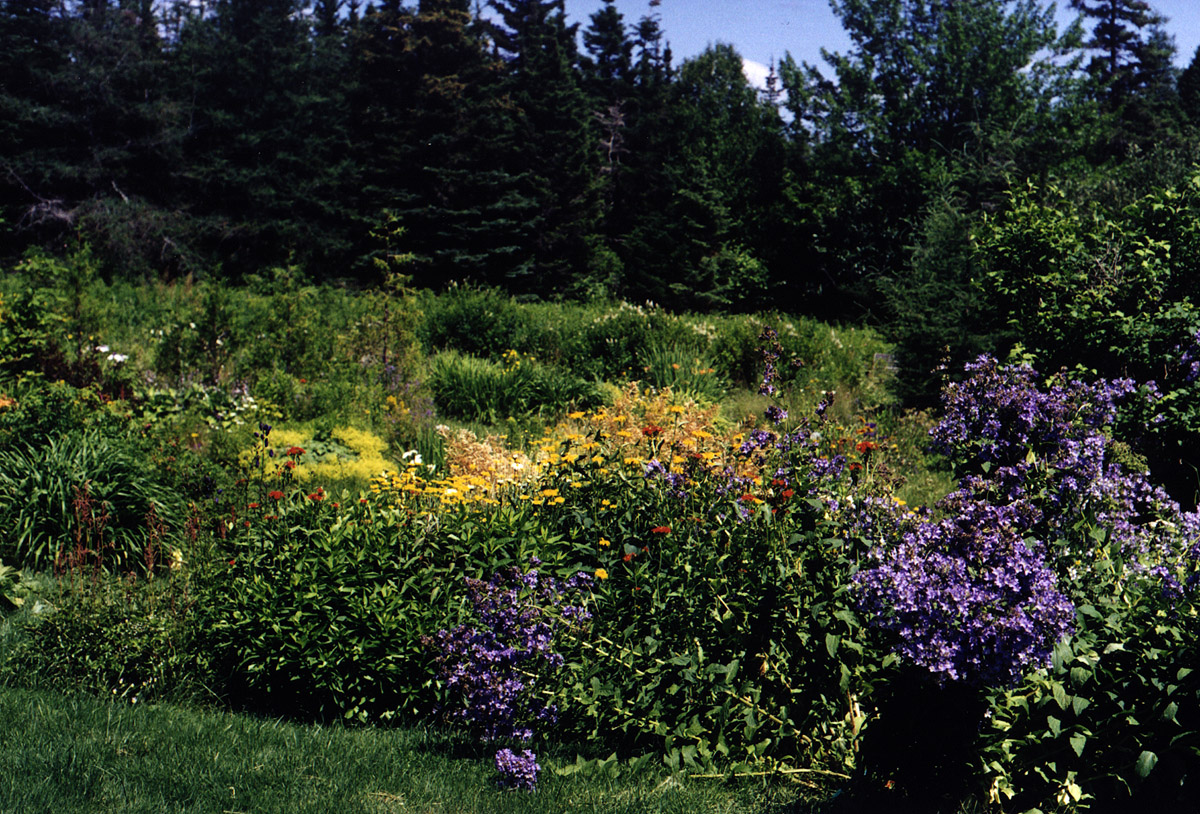 |
Below are more pictures from Louisdale (from Theresa's collection).
 |
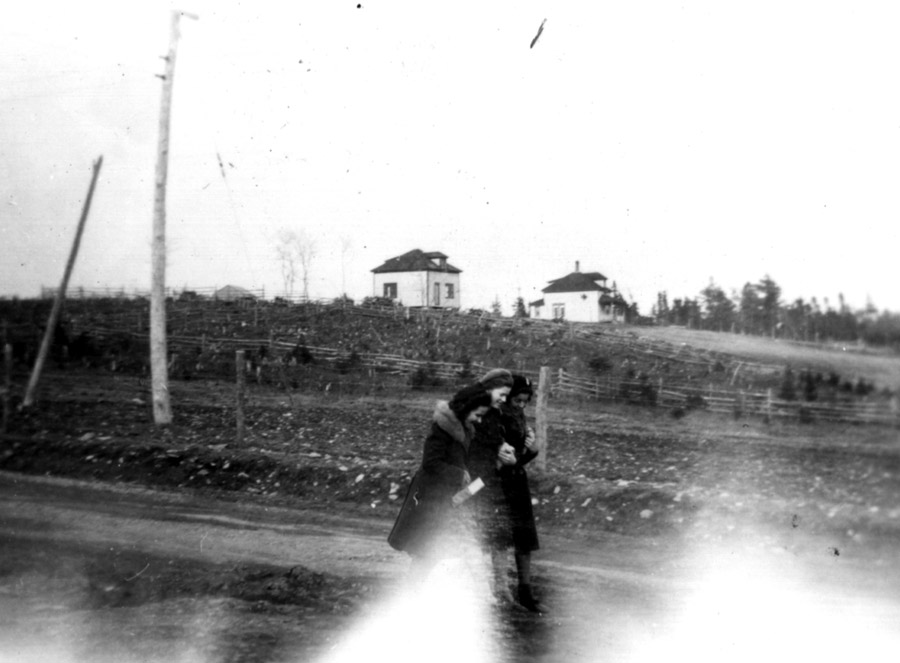 |
 |
 |
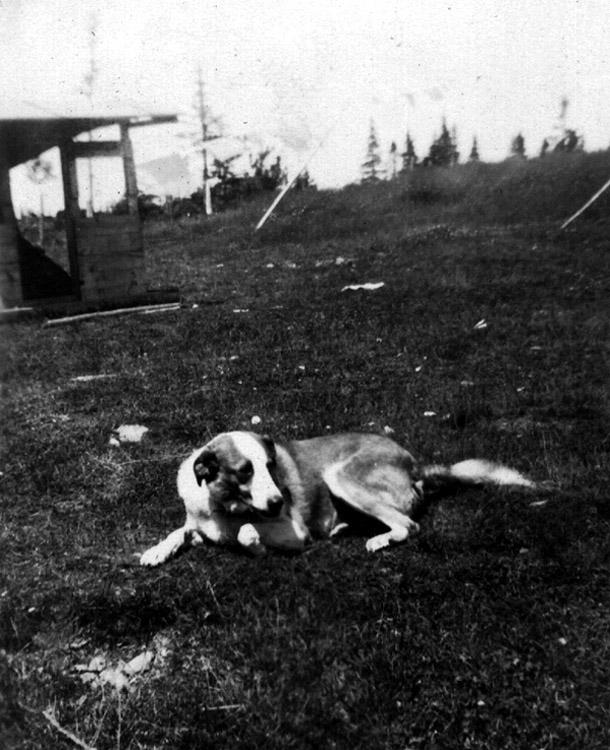 |
Louisdale Catholic church - St. Louis Parish.
 |
Follow this link to a page of photos of this church, along with photos of the gravestones and graveyard and other information.
This file last modified
: Home :

